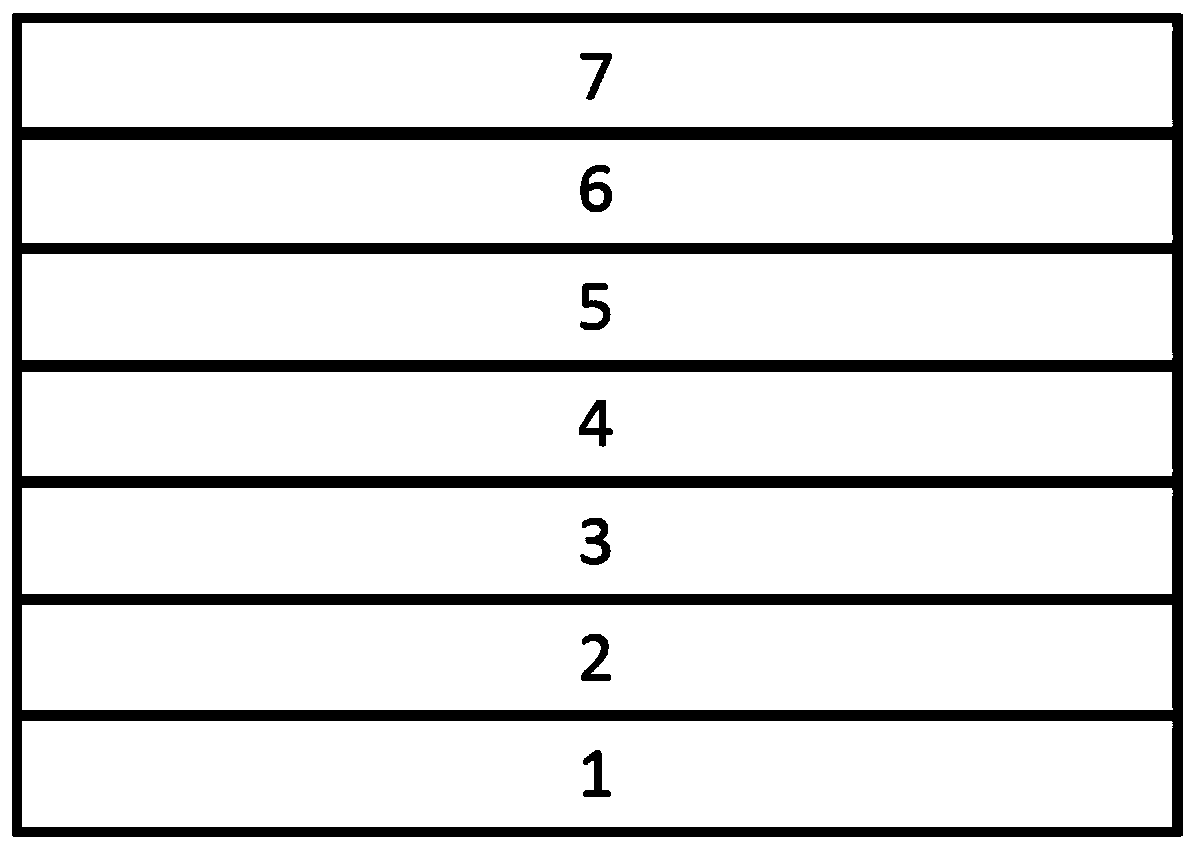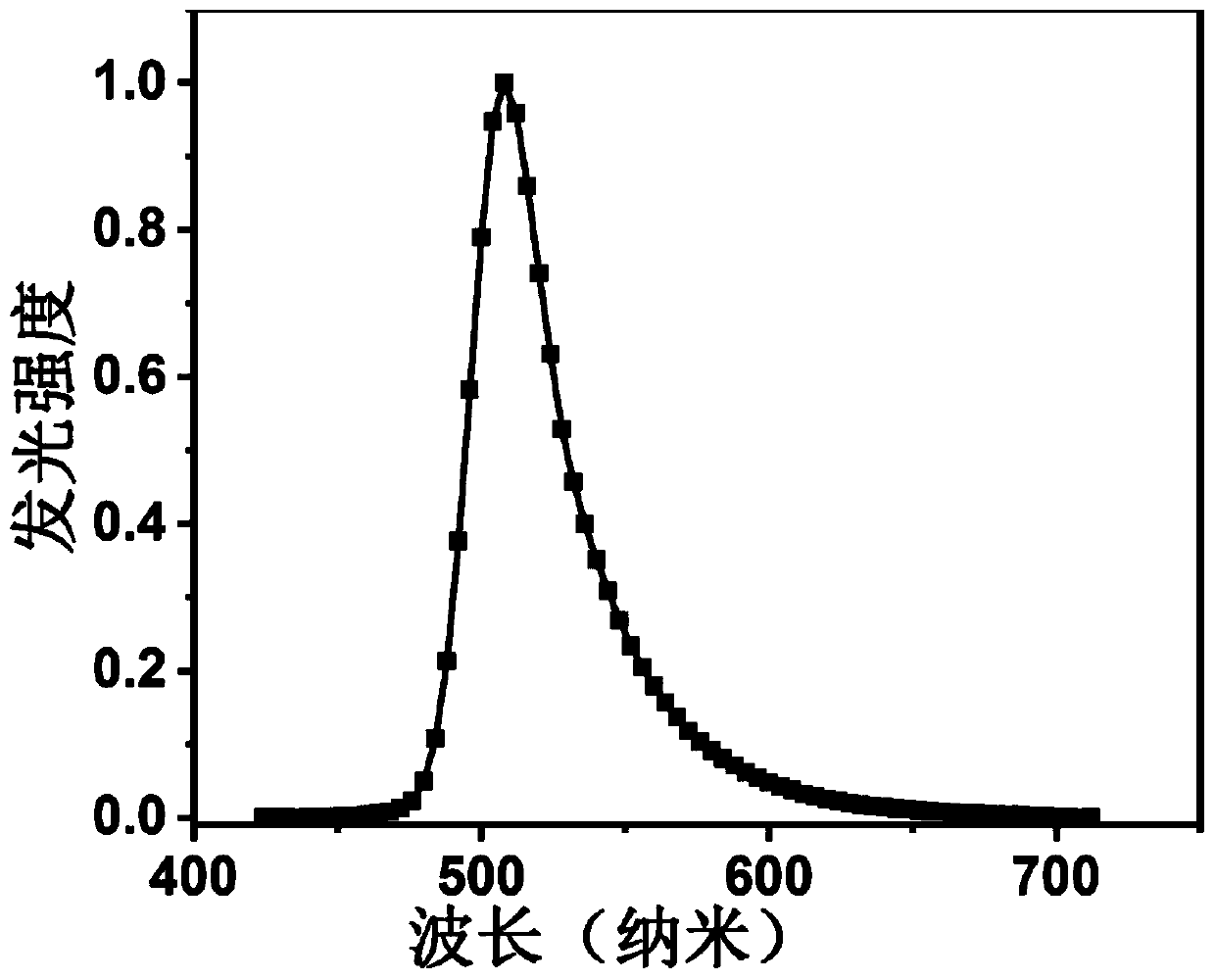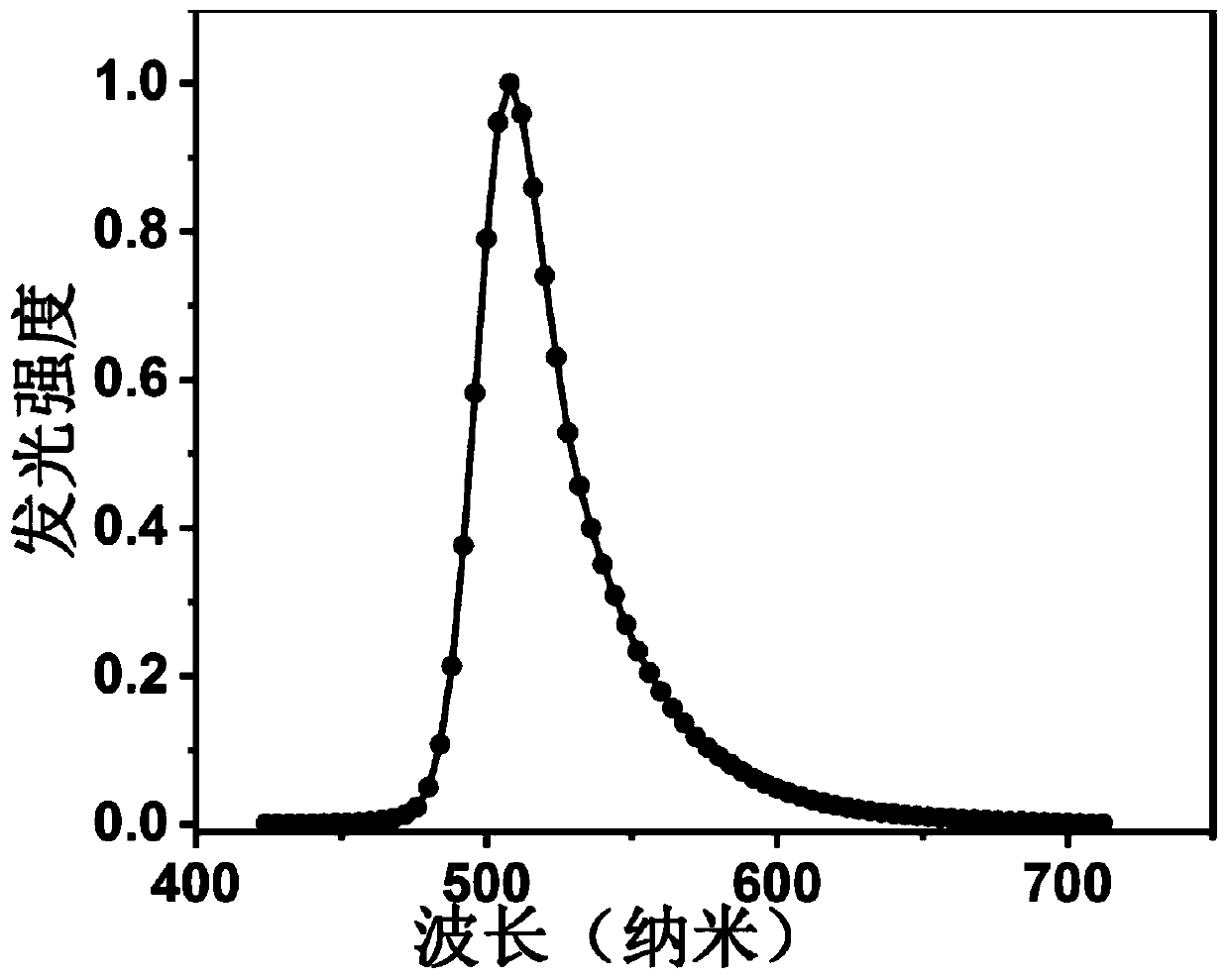Green-light narrow-spectrum three-coordinate boron luminous compound, luminous composition and application thereof
A compound, narrow spectrum technology, applied in the green light narrow spectrum tri-coordinated boron luminescent compound, the application field of organic electroluminescent devices, can solve the problem of lack of high-performance green luminescent materials and so on
- Summary
- Abstract
- Description
- Claims
- Application Information
AI Technical Summary
Problems solved by technology
Method used
Image
Examples
Embodiment 1
[0100] Table 1. Summary of Synthesis Example Product Data.
[0101]
[0102] In the first step, 60 mL of an anhydrous solution containing 35.2 mmol of raw materials (ie, 3,6-bis(4-(tert-butyl)phenyl)-9H-carbazole or its derivatives: C-1 to C-6) DMF (N, N-dimethylformamide) solution was slowly added dropwise to 50 mL of anhydrous DMF solution containing 4.9 g of potassium tert-butoxide (43.8 mmol), and after stirring at room temperature for 2 hours, 20 mL of 3. 1 g of 2-bromo-1,3-difluorobenzene (16.0 mmol) in dry DMF. The reaction system was stirred at 140° C. for 24 hours, then cooled to room temperature, and poured into ice water (2 L). The white solid was filtered off with suction, dried in vacuo, and further purified by column chromatography using a mixed eluent of dichloromethane / petroleum ether to afford intermediate 1a as a white solid.
[0103] In the second step, under the protection of nitrogen atmosphere, 19.4 mL of n-hexane solution (25.2 mmol) of tert-butylli...
Embodiment 2
[0107] Table 2. Summary of Synthesis Example Product Data.
[0108]
[0109]
[0110]
[0111] In the first step, 4.1g 3,5-difluoro-4-chlorobromobenzene (18mmol), 19.8mmol organic boric acid raw material (B1-B28), 5.0g potassium carbonate (36mmol), 1g tetrakis (triphenylphosphine ) palladium (0.9mmol), add 144mL tetrahydrofuran and 36mL water, the system is repeatedly evacuated and filled with nitrogen three times, then heated to reflux under the protection of nitrogen for 24 hours, cooled to room temperature, the reaction solution was filtered, and 0.5L water was added to the filtrate , the organic phase was extracted three times with 1L of dichloromethane in equal parts, the organic phase was separated and concentrated in vacuo, and then further purified by column chromatography using a mixed eluent of dichloromethane / petroleum ether to obtain a white solid 2a.
[0112] In the second step, 60 mL of anhydrous DMF containing 35.2 mmol of raw material (3,6-bis(4-(tert-...
Embodiment 3
[0118] Table 3. Synthesis Example Product Data Summary
[0119]
[0120]
[0121]
[0122]
[0123]
[0124] In the first step, 4.1g 3,5-difluoro-4-chlorobromobenzene (18mmol), 19.8mmol raw organic aromatic amine (A1-A54), 19.0g sodium tert-butoxide (19.8mmol), 330mg tris(di Benzylideneacetone) dipalladium (0.36mmol) and 182mg tri-tert-butylphosphine (0.9mmol) were added to 90mL toluene, the system was repeatedly evacuated and filled with nitrogen three times, then heated to reflux for 24 hours under the protection of nitrogen, and then cooled to room temperature , filter the reaction solution, add 0.5L water to the filtrate, divide and extract the organic phase three times with 1L dichloromethane in equal amounts, separate the organic phase and concentrate in vacuo, then use the mixed eluent of dichloromethane / petroleum ether Further purification by column chromatography afforded intermediate 3a as a white solid.
[0125] In the second step, 60 mL of anhydrous...
PUM
 Login to View More
Login to View More Abstract
Description
Claims
Application Information
 Login to View More
Login to View More - Generate Ideas
- Intellectual Property
- Life Sciences
- Materials
- Tech Scout
- Unparalleled Data Quality
- Higher Quality Content
- 60% Fewer Hallucinations
Browse by: Latest US Patents, China's latest patents, Technical Efficacy Thesaurus, Application Domain, Technology Topic, Popular Technical Reports.
© 2025 PatSnap. All rights reserved.Legal|Privacy policy|Modern Slavery Act Transparency Statement|Sitemap|About US| Contact US: help@patsnap.com



